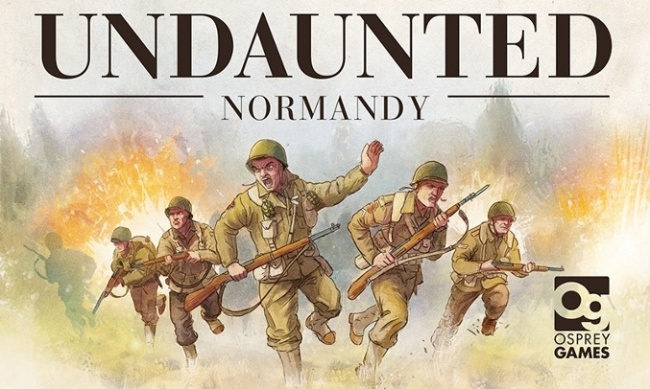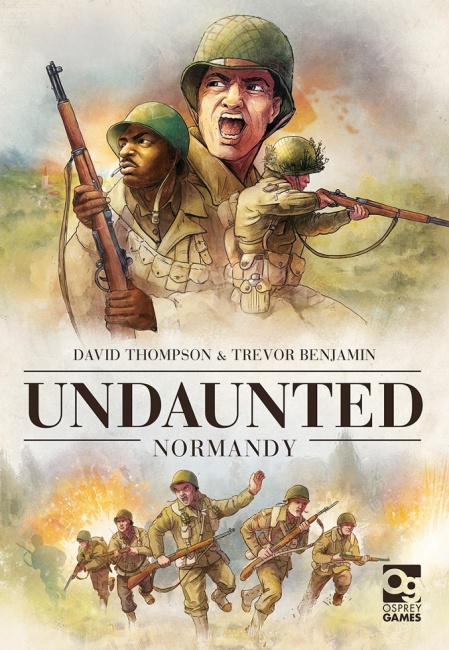Undaunted: Normandy
Publisher: Osprey Games
Release Date: August 2019
Price: $40.00
Creators: David Thompson and Trevor Benjamin; artwork by Roland MacDonald
Format: Deck-building card game w/ board and dice-based combat
Number of Players: 2
Play time: 45-60 mins.
SKU: OSPGNM029
Age Rating: 14+
ICv2 Rating: 3 Stars out of 5
The format of this game may be slightly misleading to potential buyers, because it looks like a slightly heavier game than it really is. In fact, it’s a fairly light war game in the form of a deck-builder, and with a lot of luck involved. For some players, this will be a strike against it, because the mechanics of the game involve luck not only in the combat, but in what actions the player is allowed to perform on any given turn. As the game progresses and your deck grows, the odds of getting the card you desire in that turn’s hand may diminish, depending on how you are adding cards to your deck. You have only four cards in your hand on most turns, one of which must be spent on deciding who plays first, so your actual options are very limited. At the start, your entire deck is typically 9-12 cards, but it gets larger as the game progresses, if you aren’t suffering heavy casualties. That last is because when one of your units is hit, you typically lose a card from your hand or your deck. The more units you have in play, the more cards in your deck, and cards can ONLY be used for the unit they’re attached to. Thus, a "Rifleman Squad A" card cannot be used by a unit that is not a Rifleman in Squad A.
Special units, like Machine Gunners, Snipers and Mortar units, are very valuable in the later scenarios, but their very existence in your force reduces the frequency with which you can take actions with your Riflemen or Scouts.
There are also game mechanics that appear to be for play balance, but are counter-intuitive. For example, the more of the board a player explores, the more "Fog of War" cards are added to their deck, and those cards have the effect of reducing the player’s effectiveness. The only way to keep that from happening is to use some of your very limited actions to remove those cards from your deck. This means you are using Scout actions to explore, but also Scout actions to remove Fog of War cards.
Oddly, the Fog of War mechanic also rewards players on the defensive who don’t move around much, in at least some of the scenarios. This makes some of the scenarios have a very artificial feel to them, rather than a historical one. If you just want a game, though, rather than a historical game, then it can be an enjoyable one, within these limits.
The game is simple to learn, and there are many tactical paths to take, but in any given game, a player may be frustrated by the draw of the cards or the roll of the dice. Players who can take that in stride will find an interesting challenge in figuring out how to use each turn’s actions to achieve the wildly different goals set up in the included scenarios. Each is loosely based on a situation from World War II, in the days following the D-Day landings, but they have been stylized in order to fit into the game’s mechanics. This means that the deck and the available cards have to be sorted separately for each scenario, which adds a few minutes to the setup time, but less than you’d encounter in some deck-building games. The game board is modular, but the numbering of the board pieces makes that part of the setup very simple. Just follow a scenario’s chart for where the board pieces go, and where the unit markers and other special markers go at the start, and setup is visually very clean.
The game is suitable for adults and older teens who want a tactical board game, and don’t mind the swings of luck.
--Nick Smith: Library Technician, Community Services, for the Pasadena Public Library in California.

ICv2 Stars: 3 (out of 5)
Posted by Nick Smith on August 22, 2019 @ 12:42 pm CT



